Before fast-casual dining and food delivery apps, there was the humble lunch counter – that magical confluence of chrome, formica, and comfort food that defined American dining for generations. Whether located in drugstores, department stores, or standalone diners, these bustling counters served up affordable, satisfying meals to workers, shoppers, and families seeking a quick bite and a moment of respite. For Baby Boomers who grew up in the post-war era, these lunch counter classics represent more than just food – they’re edible nostalgia, connecting us to a simpler time when comfort came on a plate for less than a dollar. Let’s revisit these beloved dishes that kept America fueled through the workday.
1. The Club Sandwich with Potato Chips

Nothing announced “proper lunch” quite like a perfectly executed club sandwich stacked high with turkey, bacon, lettuce, and tomato between three slices of toasted white bread. Cut into triangles and secured with frilly toothpicks that made you feel fancy just for removing them, this multi-layered marvel required two hands and your full attention. The satisfying crunch of house-made potato chips served alongside (often in a small paper basket) completed this iconic lunch that struck the perfect balance between substantial and refined. What’s Cooking America takes a bite out of history to trace the origins of the club sandwich.
Lunch counter professionals assembled these architectural wonders with practiced efficiency, spreading just the right amount of mayonnaise and expertly layering ingredients for structural integrity. The best places added their signature touches – perhaps a smear of special sauce or an extra layer of Swiss cheese – while maintaining the classic form that made the club sandwich a businessman’s lunch staple for decades. Many Baby Boomers still judge modern restaurants by their ability to properly execute this seemingly simple but technically demanding sandwich.
2. Tuna Melt on English Muffin
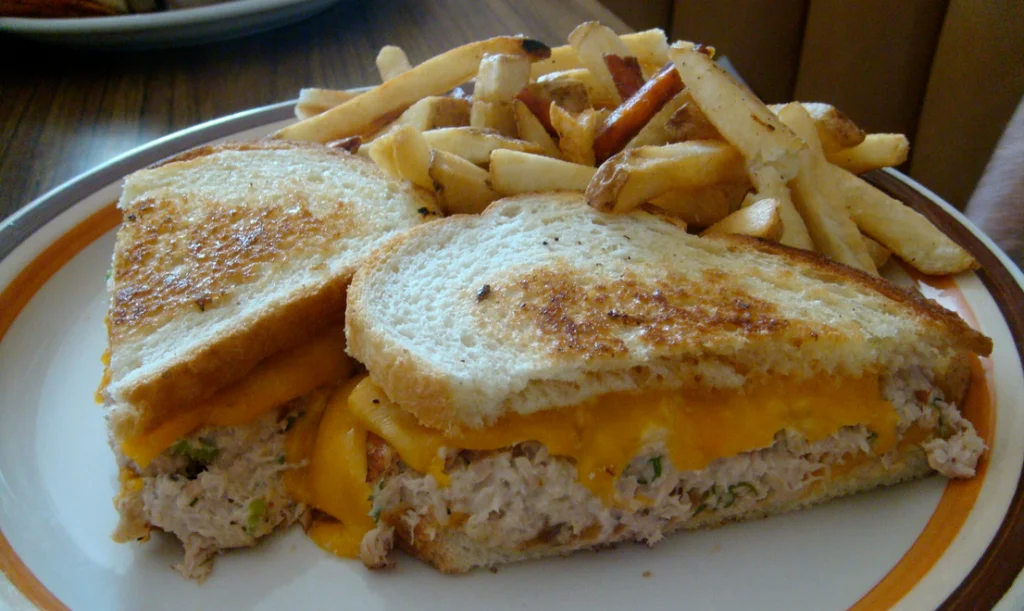
This open-faced comfort classic represented the perfect marriage of hot and cold, creamy and crunchy, in a dish that could be assembled and served in minutes flat. The foundation was always a toasted English muffin, its nooks and crannies creating the perfect textural base for a scoop of house-made tuna salad topped with a slice of melted American cheese. That moment when the tuna salad warmed slightly while the cheese bubbled to golden perfection under the salamander broiler was nothing short of culinary alchemy. Tasting Table writes that the origins of the tuna melt were something of an accident.
Regular customers developed fierce loyalty to their preferred lunch counter’s specific tuna salad formula – some swore by finely minced celery and onion, while others preferred pickle relish or a dash of curry powder in the mix. The companion cup of soup (often tomato or vegetable) and the obligatory slice of dill pickle completed this satisfying meal that somehow managed to feel both virtuous and indulgent at once. For many office workers, this affordable luxury provided a bright spot in an otherwise mundane weekday.
3. Hot Beef Commercial with Mashed Potatoes
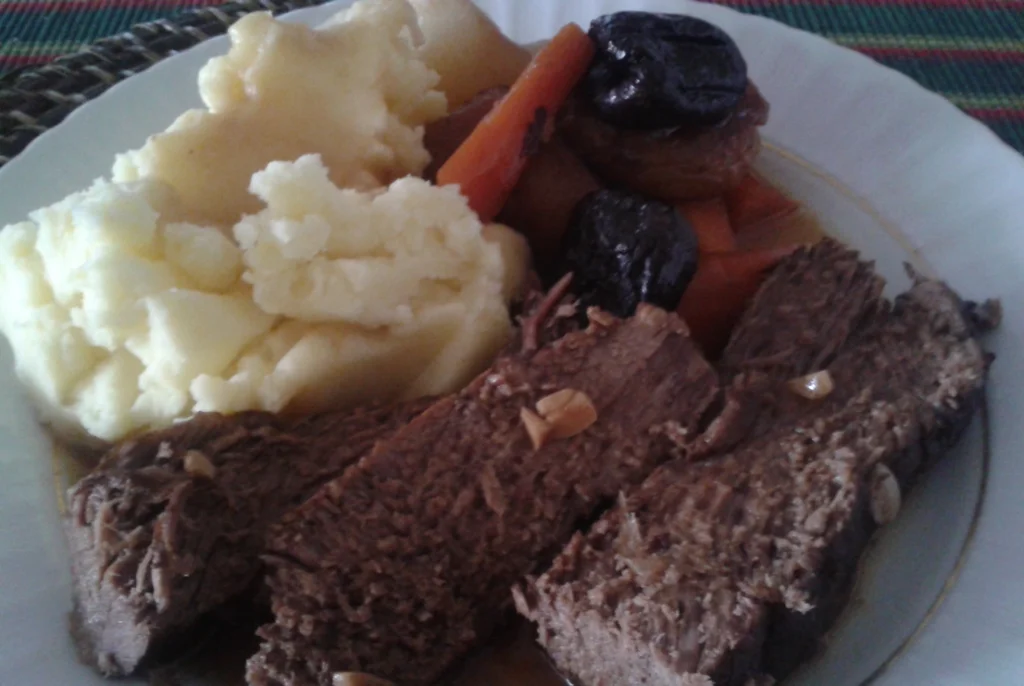
Nothing said “serious lunch” quite like the open-faced hot beef sandwich drowning in rich brown gravy – affectionately called a “commercial” in parts of the Midwest. Two slices of white bread formed the foundation, topped with thinly sliced roast beef and a generous lake of gravy that transformed the bread into a deliciously soggy platform. A perfect ice cream scoop of mashed potatoes on the side provided both visual appeal and additional real estate for that sublime gravy. Tasting Table asserts that there is a scientific reason beef and potatoes taste so irresistibly good together.
The best lunch counters roasted their own beef and made gravy from the drippings, creating a depth of flavor that kept regulars coming back week after week. This hearty meal required proper utensils and perhaps an extra napkin tucked into your collar – this was no sandwich to be picked up by hand. The commercial represented the pinnacle of lunch counter comfort food: unpretentious, satisfying, and delivered with the kind of friendly efficiency that defined American service in the post-war decades.
4. Patty Melt with Onion Rings
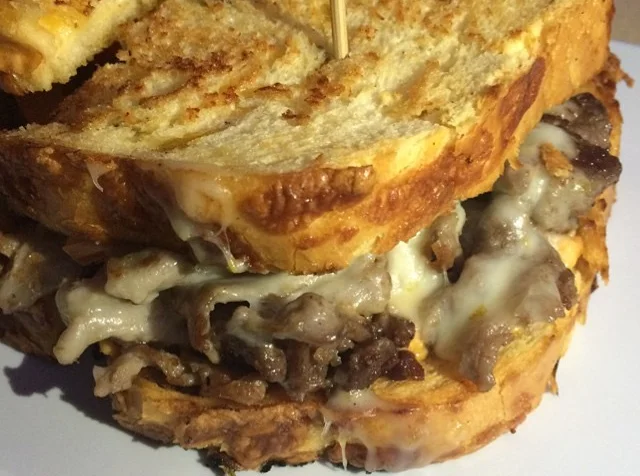
The patty melt occupied that perfect middle ground between hamburger and grilled cheese – a ground beef patty nestled between slices of rye bread with Swiss cheese and grilled onions, all pressed together on a well-seasoned grill until the ingredients fused into melty perfection. The distinctive diamond grill marks on the bread signaled that this was no ordinary sandwich but rather a study in textural contrasts and savory satisfaction. The accompanying onion rings – often stacked like a golden tower on the plate – provided a crispy counterpoint.
Lunch counter cooks elevated this sandwich through subtle touches: butter liberally applied to the bread for maximum crunch, onions patiently caramelized until sweet, and the precise timing needed to melt the cheese without burning the rye. Regular customers knew to request their preferred doneness for both the burger and the onions, creating a personalized experience that fast food could never match. The distinctive sound of the spatula pressing down on the sizzling sandwich announced to waiting diners that satisfaction was moments away.
5. Chicken à la King on Toast Points
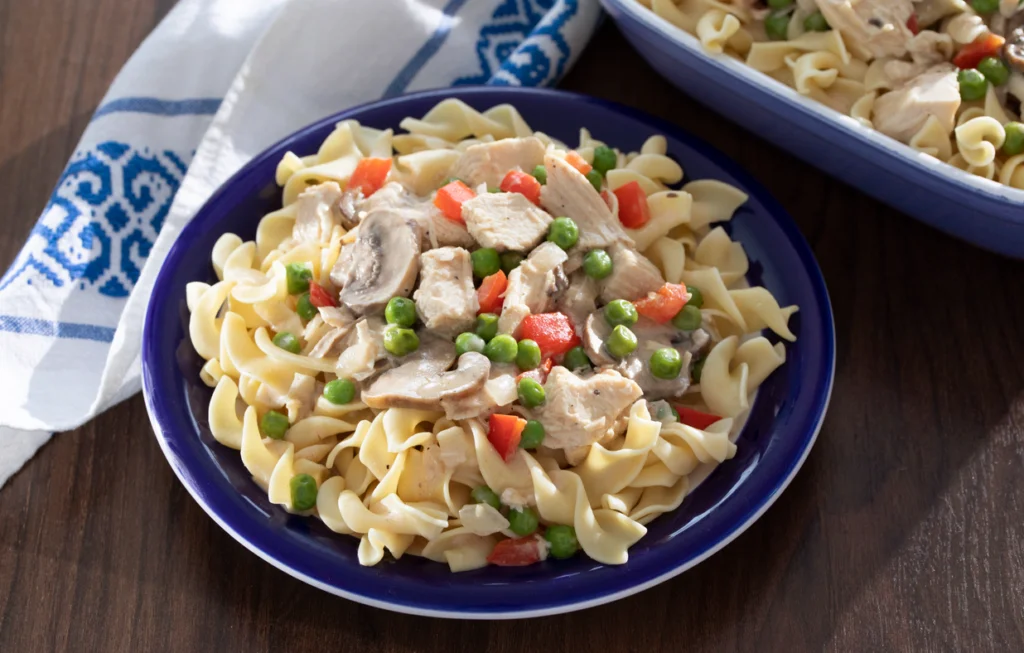
This creamy concoction of diced chicken, mushrooms, and pimientos in a delicate white sauce served over triangular toast points brought a touch of elegance to lunch counter dining. Often presented in a distinctive oval dish with parsley garnish, this dish made office workers feel like they were having a special occasion meal right in the middle of a workday. The best versions featured tender chunks of white and dark meat chicken, with just enough sauce to enrobe the ingredients without drowning them.
Lunch counters took particular pride in their à la King recipes, which often came from the personal collection of the original owner or head cook. The sauce required careful attention – too thick and it became stodgy, too thin and it failed to cling properly to the chicken and toast. Regular customers recognized quality in the subtle addition of sherry or the proper proportion of red pimientos that added both color and flavor to this comforting classic that bridged the gap between homestyle cooking and restaurant fare.
6. Western Denver Omelette Sandwich
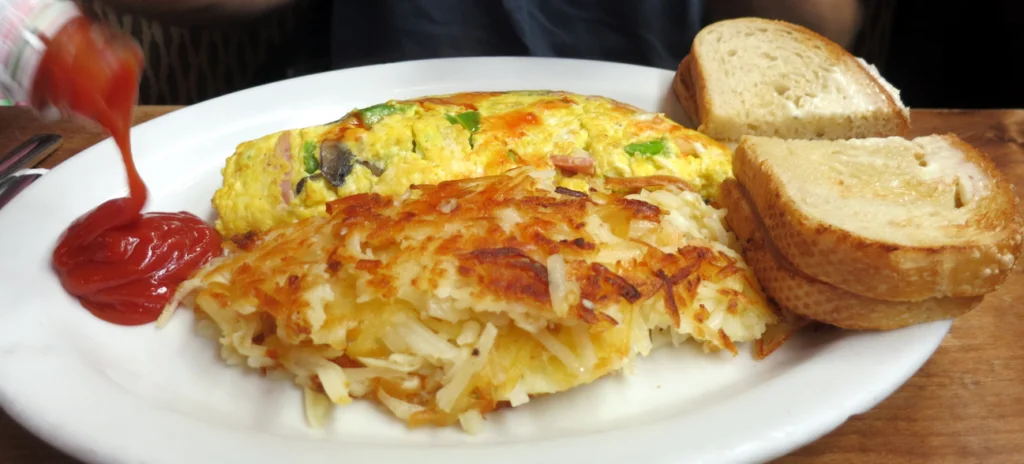
This brilliant repurposing of breakfast ingredients for the lunch crowd featured fluffy eggs studded with diced ham, green peppers, and onions, grilled to perfection and served between slices of toasted bread. The beauty of this creation lay in its versatility – equally satisfying at 8 AM or 1 PM – and its portable nature that made it a favorite of busy shoppers and workers with limited lunch breaks. The distinctive aroma of peppers and onions sizzling on the grill signaled to waiting customers that good things were coming.
Lunch counter cooks distinguished themselves through their egg technique – the best maintained a soft, moist texture rather than cooking the eggs to rubber – and their knife skills evident in the uniformly diced vegetables. Regular customers often customized their orders, requesting additions like cheese or tomato, which skilled countermen accommodated with practiced efficiency. The sandwich typically arrived with a generous handful of potato chips and a pickle spear, creating a complete meal that could be eaten entirely without utensils – a true innovation for its time.
7. Chicken Croquettes with Green Peas
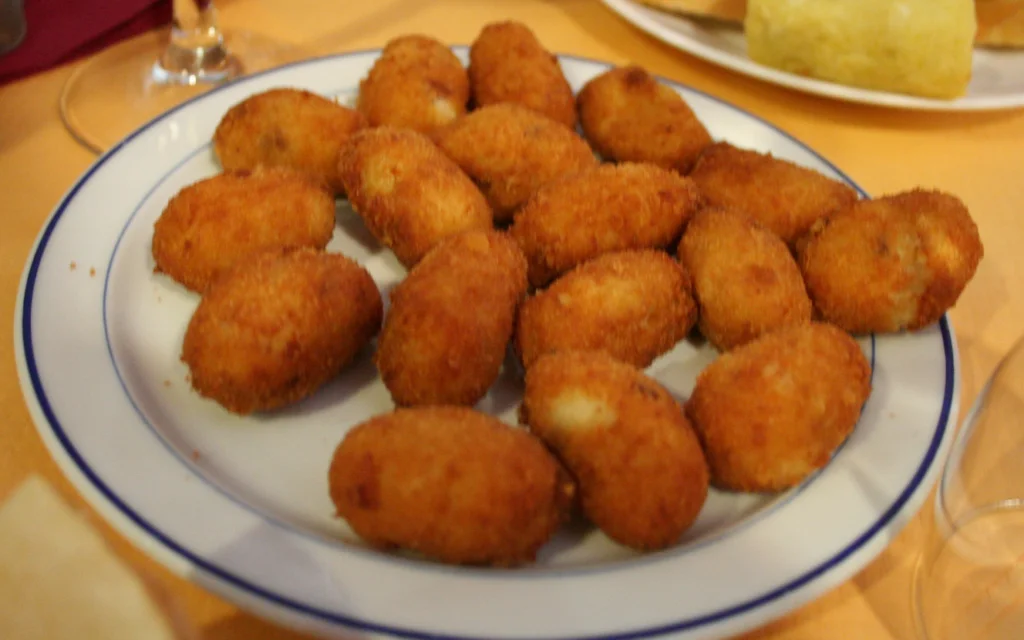
These crispy, golden cylinders of creamed chicken bound with béchamel sauce and bread crumbs represented the height of lunch counter culinary technique. Served atop a puddle of silky gravy with a perfect scoop of mashed potatoes and a side of vibrant green peas, this plate brought together contrasting colors, textures, and flavors in a deeply satisfying composition. The delicate crunch of the fried exterior giving way to creamy chicken filling created a textural experience that kept customers returning regularly.
Making proper croquettes required considerable skill and advance preparation – shaping the chilled mixture, breading with care, and frying to golden perfection without allowing the delicate centers to burst. This labor-intensive dish represented a commitment to quality that distinguished superior lunch counters from their competition. For many diners, this dish evoked memories of special-occasion meals at home, bringing comfort and nostalgia with every forkful of the crisp exterior and creamy interior paired with buttery mashed potatoes.
8. Waldorf Salad Plate with Saltines
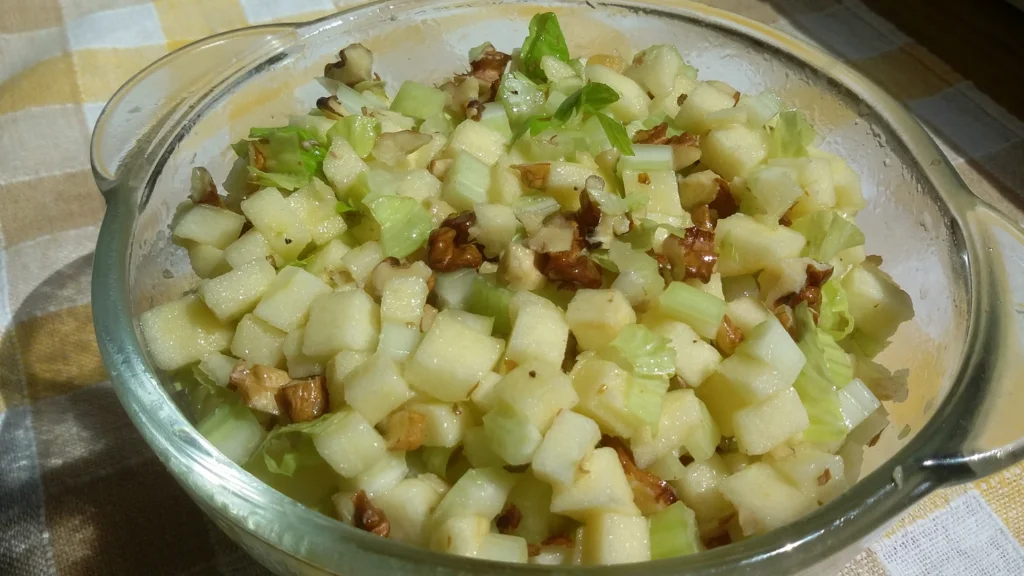
This refreshing combination of apples, celery, walnuts, and grapes bound with mayonnaise and served on a lettuce leaf offered a lighter alternative without sacrificing satisfaction. Typically accompanied by a stack of saltine crackers and perhaps a dollop of cottage cheese, this plate appealed to ladies who lunched as well as weight-conscious office workers. The careful balance of sweet apples, crunchy celery, and nutty walnuts created a symphony of textures that elevated this simple salad to signature status.
The best lunch counters distinguished their Waldorf salads through thoughtful touches – perhaps using red and green apples for color contrast, adding a hint of lemon to prevent browning, or incorporating just the right amount of mayonnaise to bind the ingredients without drowning them. Regular customers appreciated the predictable perfection of this dish, which offered a welcome reprieve from heavier lunch fare while still providing enough substance to power through an afternoon of work or shopping. The familiar blue box of saltines served alongside became an essential part of the experience.
9. Liver and Onions with Bacon
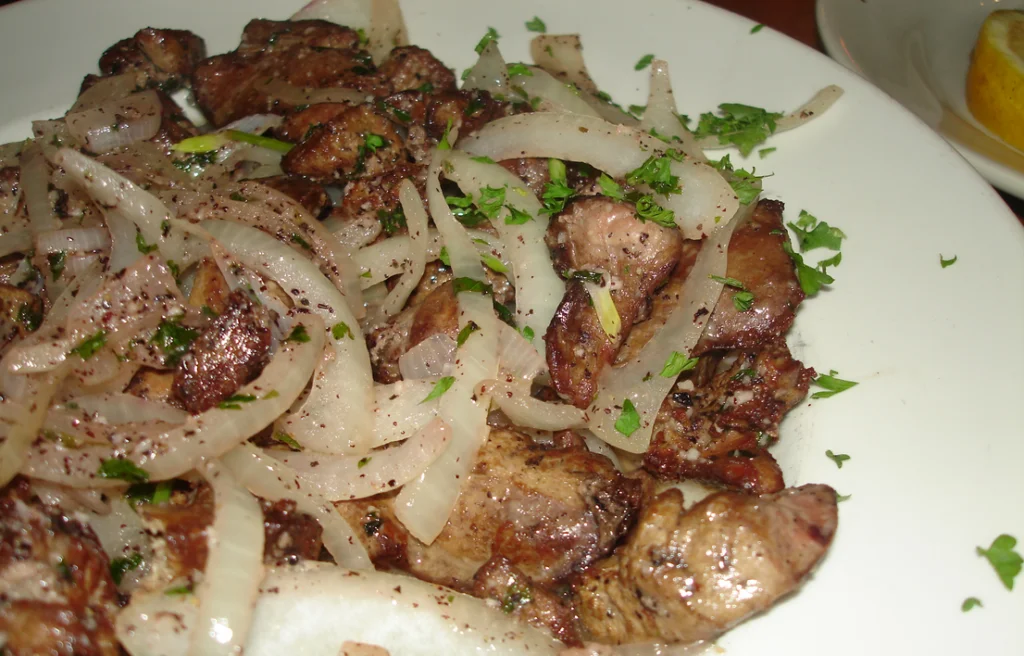
This polarizing classic inspired either devoted passion or vehement avoidance among the lunch crowd, with little middle ground to be found. For its fans, a perfectly cooked slice of beef liver topped with caramelized onions and crispy bacon strips represented the pinnacle of lunch counter expertise. The liver, never cooked beyond medium to maintain tenderness, offered a mineral richness that paired perfectly with sweet onions and smoky bacon, all unified by a light gravy that tied the flavors together.
Skilled lunch counter cooks knew exactly how to prepare liver properly – soaking it in milk to reduce bitterness, cooking it quickly over high heat, and serving it immediately for best texture. The standard accompaniments of mashed potatoes and buttered vegetables completed a plate that offered tremendous nutritional value for its modest price point. Regular customers who ordered this dish frequently developed rapport with counter staff who recognized their appreciation for a culinary tradition that was already beginning to fade from American dining consciousness.
10. Salmon Patties with Creamed Peas
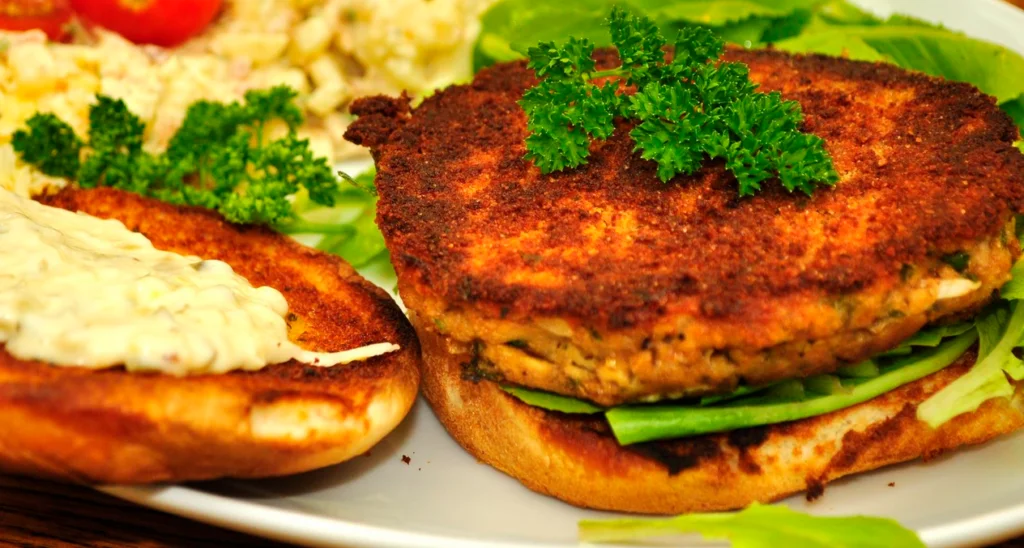
These golden disks of canned salmon mixed with breadcrumbs, eggs, and seasonings then pan-fried to crispy perfection represented ingenious wartime resourcefulness that remained popular long after rationing ended. Topped with creamed peas that added both vibrant color and velvety sauce, these patties offered protein and comfort in equal measure. The contrast between the crisp exterior and the flaky salmon interior created a textural experience that kept regulars ordering this Depression-era creation well into the prosperity of the post-war years.
Lunch counter cooks demonstrated their skill through perfectly seasoned patties that held together during cooking without becoming dense or heavy. The accompanying creamed peas – peas suspended in a delicate white sauce – required careful attention to timing to maintain their bright green color and sweet flavor. This reassuring plate often came with a side of mashed potatoes or rice that served as the perfect vehicle for capturing every bit of the creamy sauce, ensuring that nothing went to waste – a value still important to the generation that grew up during leaner times.
11. Welsh Rarebit on Toast
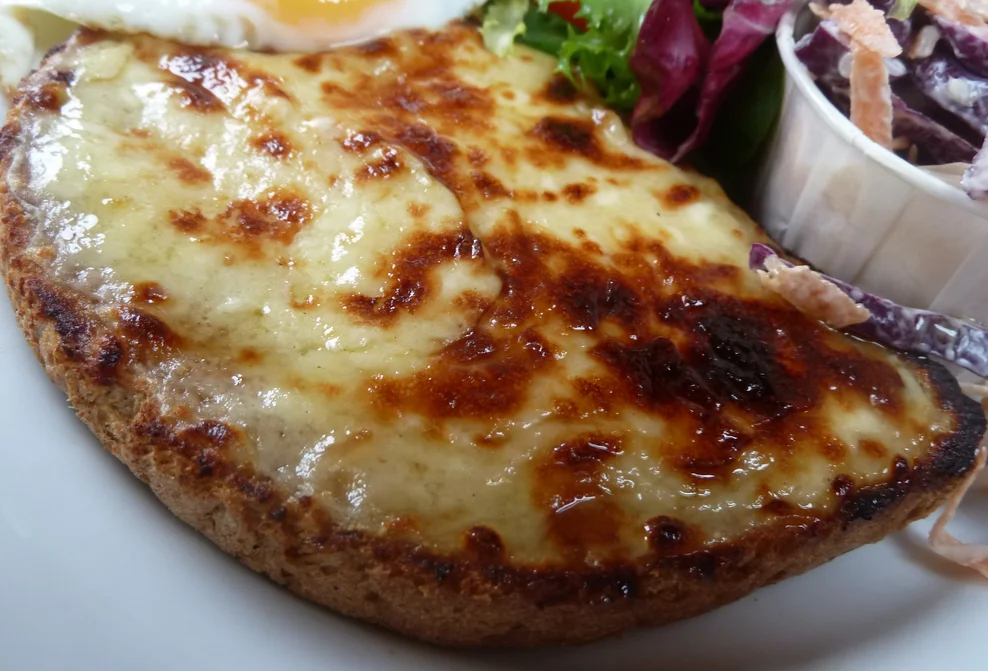
This deceptively simple dish of savory cheese sauce poured over toasted bread showcased the alchemical magic that happened when humble ingredients met proper technique. The velvety sauce – made from sharp cheddar, beer or milk, mustard, and seasonings – transformed plain toast into a transcendent lunch experience, especially when topped with a slice of tomato or strips of bacon. The best versions achieved the perfect consistency – thick enough to coat the toast without running off the edges but not so thick it became stodgy.
Lunch counter chefs guarded their rarebit recipes carefully, with many claiming special ingredients or techniques passed down through generations. The dish required constant attention while cooking to prevent breaking or scorching, representing a commitment to quality that fast food operations could never match. Regular customers could gauge their counter’s standards by this technically demanding dish – a properly executed rarebit with its smooth, tangy sauce spoke volumes about the overall quality of the establishment and its dedication to traditional culinary techniques.
12. Baked Macaroni and Cheese with Stewed Tomatoes
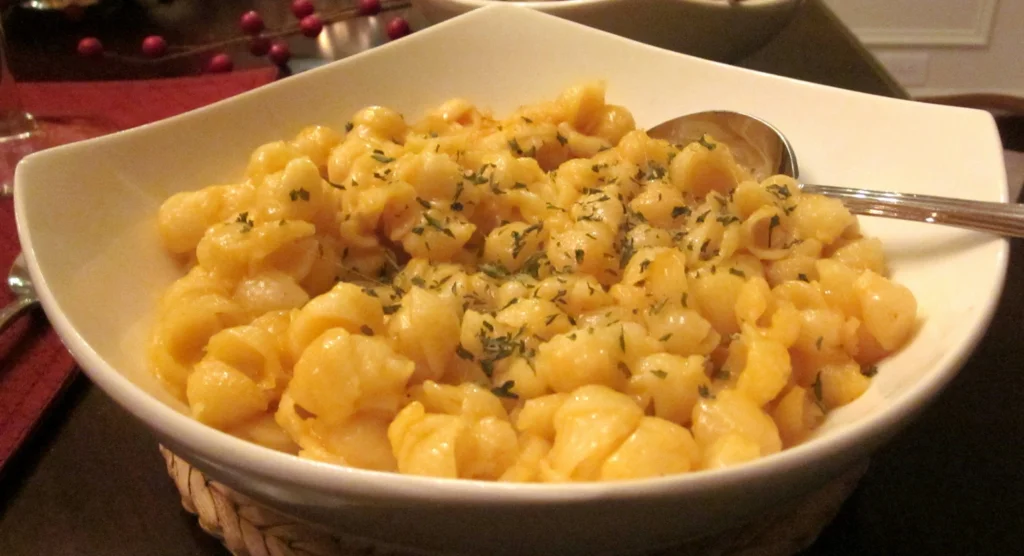
This unlikely pairing of creamy pasta with acidic tomatoes created a perfect balance that satisfied deeply while costing mere pennies to produce. Individual oval casserole dishes arrived steaming hot, the top gloriously browned and bubbling, with a small bowl of stewed tomatoes alongside for the customer to add according to personal preference. The contrast between the rich, cheesy pasta and the bright, slightly sweet tomatoes created a combination greater than the sum of its parts.
The best lunch counters prepared their macaroni and cheese from scratch, creating a silky cheese sauce with real cheddar and dotting the top with butter before browning under the broiler. The stewed tomatoes often contained a hint of sugar and perhaps a touch of green pepper, creating a distinctively American accompaniment that complemented the pasta perfectly. This satisfying vegetarian option provided remarkable value and comfort, especially during colder months when customers sought warming meals to fortify themselves before returning to work or shopping.
These humble lunch counter classics represent far more than just food – they’re time machines that transport us back to an era when dining out was both special and accessible. In our modern world of fusion cuisine and artisanal ingredients, there’s something profoundly comforting about these straightforward dishes that nourished countless Americans through their workdays. While many of the department stores and drugstores that housed these counters have disappeared, the flavors and memories remain vivid for those lucky enough to have experienced them firsthand. Perhaps the greatest testament to their culinary significance is how many Baby Boomers still attempt to recreate these dishes at home, chasing not just the taste but the feeling of sliding onto a spinning stool, placing an order with a familiar server, and finding a moment of connection and comfort in the middle of a busy day. These forgotten classics remind us that sometimes the most meaningful food isn’t the most elaborate – it’s the kind that makes you feel at home, wherever you happen to be eating it.


